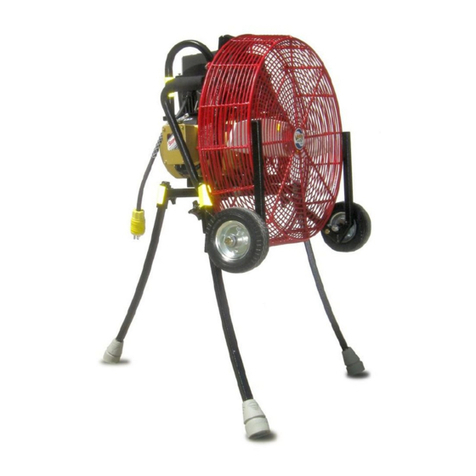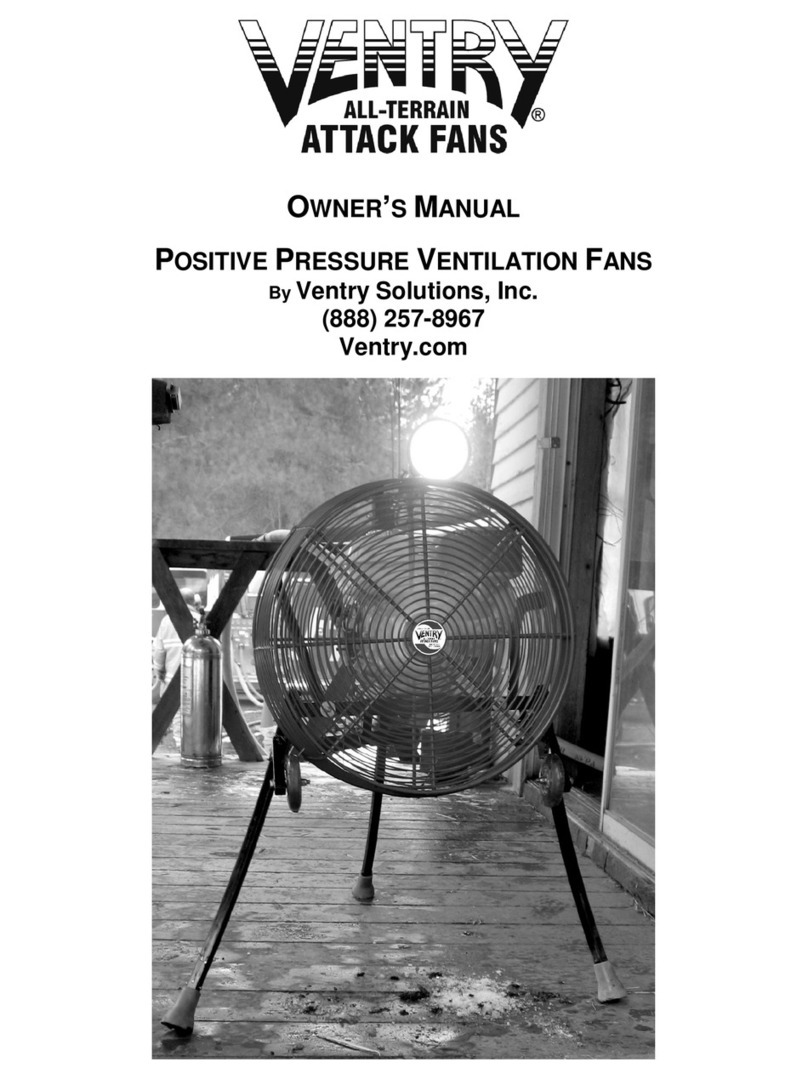
ii
FAN SPECIFICATIONS..................................................................................................1
ADVANTAGES OF VENTRY®ALL TERRAIN FANS......................................................2
OUT OF THE BOX..........................................................................................................3
FAN TRANSPORT.......................................................................................................... 3
One Person Carry.......................................................................................................3
Two Person Carry.......................................................................................................3
LEG ADJUSTMENT........................................................................................................ 4
How to raise the fan with one person..........................................................................4
Another method of raising the fan, one person...........................................................6
How to lower the fan, one person ...............................................................................6
HOW TO USE POSITIVE PRESSURE VENTILATION................................................... 7
PPV The Basics..........................................................................................................7
Placement................................................................................................................... 8
Smoke Ejection...........................................................................................................8
FAN SAFETY.................................................................................................................. 8
Safety Guidelines........................................................................................................8
Ground Debris Pickup / Maximum Air Volume............................................................9
Stability .......................................................................................................................9
Filling the Gas Tank.................................................................................................... 9
Backdraft Situations.................................................................................................... 9
COMMON QUESTIONS ABOUT POSITIVE PRESSURE............................................ 10
Why positive instead of negative pressure ventilation?.............................................10
When should positive pressure not be used? ...........................................................10
What is the door seal and how important is it?.......................................................... 10
What are some examples of positive pressure ventilation? ...................................... 10
FAN COMPARISON METHODS................................................................................... 11
Ribbon Test............................................................................................................... 11
Volume Test..............................................................................................................11
Thrust Test................................................................................................................11
WARRANTY..................................................................................................................12
Propeller / Frame / Guard ......................................................................................... 12
Engine.......................................................................................................................12
TABLE OF CONTENTS






























